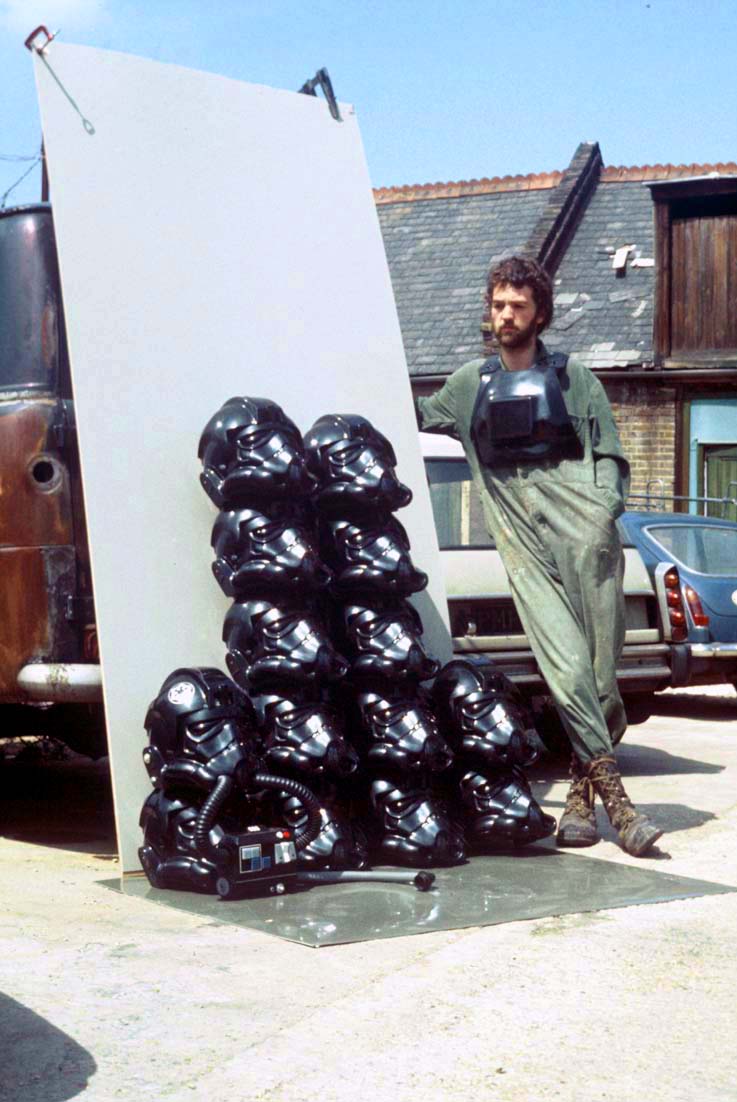It all started when...
Nick Pemberton was contacted by the 'Buyer' for Starwars to supply helmets, masks belts etc... as he was a scenic artist with a union ticket working as an outside contractor to the film & television industry.
Nick took the job on without knowing how he would create futuristic slick characters, but as he recalls, "I know a man who can". This was Andrew.
Andrew Ainsworth lived a couple of doors away on Twickenham Green and was building up his Industrial Design business to manufacture his own products. Some of these used vacuum formed plastics and since Andrew had built the forming machines to his own design, complicated mouldings could be achieved.
Nick had several meetings with George Lucas at Elstree Studios, and with the help of a concept drawing from Ralph McQuarrie, arrived at a clay model that Lucas accepted as the way forward. On returning from Elstree, Nick left the clay model in the car overnight which froze since it was January and ended up in a crumbled mess!
Nick had already shown Andrew the model to ask if it was possible to make a character like this, even though it had few details and no surface finish at this stage. With the small McQuarrie sketch and memory of the clay model, Andrew set about making up a prototype, "with all the enthusiasm of youth, just as a punt to see if there was any work in the film industry".
Having developed a creative way to make moulds and forming tools, Andrew produced a set of moulds with smooth sculpted surfaces that would produce plastic skins which could be combined to create a structurally sound Stormtrooper helmet. A helmet with enough undercuts around the neck to be convincing of a futuristic being and not just an actor in a costume.
Nick took this prototype to Lucas, who immediately accepted it and ordered 50.
Andrew`s idea of the blister eyes, was that any futuristic being would have 3 dimensional eyesight, much like a fly and when formed form grey, translucent acrylic, they enhanced the sinister look of the character.
The prototype (above) was a little unfinished where the face met the back of the helmet and so Andrew designed ears that covered the joint. They also gave the helmet more presence, like a lion's mane and gave the impression of a communications device by way of the raised vertical grid.

